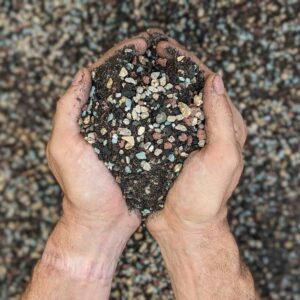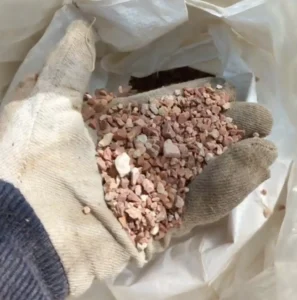And why common names kind of suck.
“Oh this is beautiful! Is this a Blue Torch cactus?”. The man was holding up a Pilosocereus pachycladus.
“That is a Pilosocereus pachycladus!”
He looked at me with a slightly bemused look, “that’s a long name”.
I could tell I was losing him, and I was struck once again by a sense of sadness due to the obvious disinterest in the scientific name of the plant. Plant taxonomy is the study of classifying organisms and whilst at first it may seem complicated, we assure you that it’s actually a very simple and beautiful system that creates less confusion than “common” names once you learn how it works.
The problem with common names like “Blue Torch” is that it could refer to any of the 56 scientifically accepted species of plants in the Pilosocereus genus of plants. That would be like lumping together Equus quagga (Zebra) and Equus africanus asinus (Donkey) and calling them both a “Horse” just because they belong to the Equus genus of animals.
And you might say, “well people don’t go around saying Equus quagga, and we still know what they mean when they say Zebra”. Thats true. But Equus only has 7 species, not the 50+ species most plant genera have, so its easy to come up with unique, memorable “common” names for them.
Plant Taxonomy Crash Course
You don’t have to be a botanist to understand the basics of plant taxonomy, read on for our quick crash course.
Binominal nomenclature
The correct way to refer to a plant is to say its Genus followed by the species, this is called binomial nomenclature (literally means “two-name naming”). When written, the whole name is italicised, the first letter of the Genus name is capitalised and the first letter of the species name is always lowercase. This is an easy way to always understand which is which. For example:
Genus species
Pilosocereus pachycladus
Homo sapien
The reason we use binomial nomenclature rather than just using the species name is that a species name is not unique on its own. For example; disciformis is a species name shared by both Melocactus disciformis and Strombocactus disciformis, two different and completely unrelated plant species. If you just said “disciformis” people would have to guess what you mean, but there is only one, and will only ever be one Strombocactus disciformis.
Another correct way to refer to a plant is to just include the first letter of the Genus, for example M.disciformis and S.disciformis are both correct.
Why the Latin?
Because it’s a dead language. Dead languages are great for scientifically naming things because they are no longer evolving and are relatively fixed in their meanings. Ancient greek is also sometimes used in plant taxonomy for this reason.
Sometimes plants are named after people but this is a horrible and self-centred idea that partly defeats the purpose of the system. Melocactus disciformis, Pilosocereus pachycladus – sounds like a whole lot of up-tight academic nonsense, doesn’t it? But it actually tells a story.
Melocactus is latin for “Melon cactus” and is in reference to the globular growth habit of all plants in the genus. Disciformis can be broken down into disci- which means “discus/disc” and -formis which means “shaped”. So put it all together: Melocactus disciformis belongs to a melon-looking genus of cacti and this particular species is noticeably disc/flat shaped.
Likewise, Strombocactus disciformis tells us that it is a disc-shaped plant species belonging to a genus of cacti which is Strombo (ancient greek for trumpet-shell, snail) shaped.
As you learn more and more botanical plant names you’ll soon begin to notice patterns and recurring themes. And soon enough, you’ll be able to infer a number of details about a plant purely by its name. For example, if a plant’s name includes the word “alba”, it often indicates that the plant has white flowers or foliage (derived from “albus” meaning “white” in Latin). Similarly, sylvestris suggests it is native to woodland or forested areas, while “officinalis” traditionally denotes a plant with historical medicinal use. These linguistic clues, rooted in Latin and Greek, can give you quick insights into a plant’s appearance, habitat, or even its traditional applications, turning each name into a miniature story.
cv. Syn. var – what does it all mean?
You might have seen the following before:
- Lophophora williamsii var. texana
- Cereus forbesii cv. Spiralis
- Echinopsis pachanoi syn. Trichocereus pachanoi
What does that all mean?
- var. is a botanical term that stands for “variety” and is used to describe a natural population of a plant species that has some stable, distinguishing traits. For example: “texana” is a variety of Lophophora williamsii that, as the name suggests, grows in Texas, but there are many varieties of this plant that also grow in Texas, so it isn’t purely location-based. “Texana” has a noticeably blue-grey stem and beautiful tufted aerole wool, and it’s these common traits which allow botanists to group them into varieties. Other varieties could be due to locality, specific flower colours, shapes or growth habits. When labelled correctly the variety name will appear after “var.”, the first letter will be lowercase and the word is always italiscised.
- cv. stands for “cultivar” and is most easily understood to mean “cultivated variety or mutation”. It is a version of a plant that has been cultivated (or in some cases bio-engineered) by humans, for example: “Spiralis” is a naturally occuring spiralling mutation of Cereus forbesii that humans have selected and encouraged in cultivation. When labelled correctly the cultivar name will appear after “cv.”, the first letter is captialised and the word is not italisced.
- syn. stands for “synonym” and is quite self-explanatory. syn. is often used when a plant has recently been reclassified as is the case with Trichocereus pachanoi (now Echinopsis pachanoi) and the author wants to communicate that they are the same plant to any potential reader who is unaware of the change.
The bigger taxonomy picture
You might have heard that there are other things above Genus in the taxonomy system, like plant families – that is correct. For example, every true cactus belongs to the plant family Cactaceae. In fact, there are 8 taxonomic ranks in total, but you will very rarely ever need to know anything above Genus. However, if you’re curious, the full taxonomic system looks like this:
Domain
Kingdom
Phylum
Class (clade)
Order
Family
Genus
Species
So let’s look at an example: Strombocactus disciformis
Domain: Eukaryote (Contains basically all life you’re familiar with, only excludes bacteria and some other microorganisms)
Kingdom: Plantae (Plants)
Phylum: Angiosperms (Flowering plants)
Class (clade): Eudicots (flowering plants that have two seed leaves upon germination)
Order: Caryophyllales (pretty technical botanical distinction at this level related to its ovary)
Family: Cactaceae (Cactus)
Sub-family: Cactoideae (Biggest cactus family by a country mile, only excludes prickly pears and a few weirdos)
Genus: Strombocactus
Species: Disciformis
There is a great and memorable mnemonic to help you remember the correct order for these:
Did King Phillip Come Over For Group Study?
Or if you’re like us and need something a little crude to remember it:
Did King Phillip Come Over For Group Sex?
Still not excited about plant taxonomy?
That’s okay. Check out the short clip below featuring Joey Santore from Crime Pays but Botany Doesn’t to be convinced. When you click play it will take you to the right part of the video. The whole video is excellent though, we’d highly recommend you watch it to learn some great plant facts.




